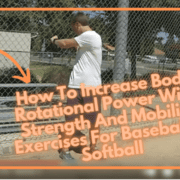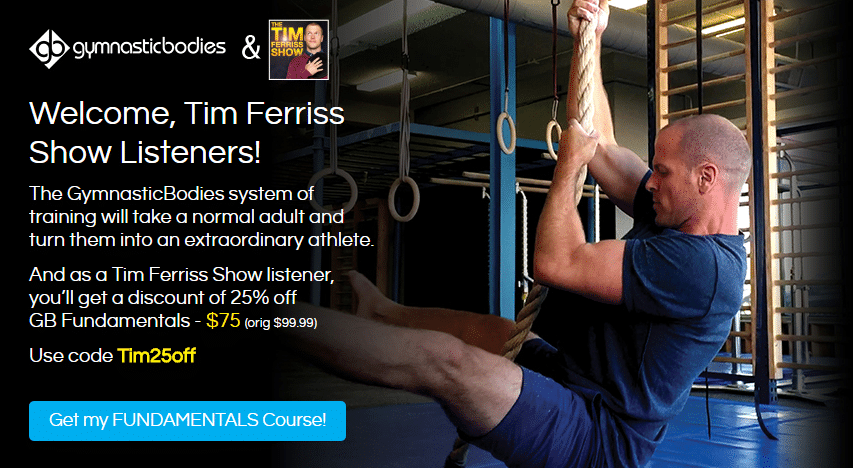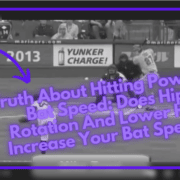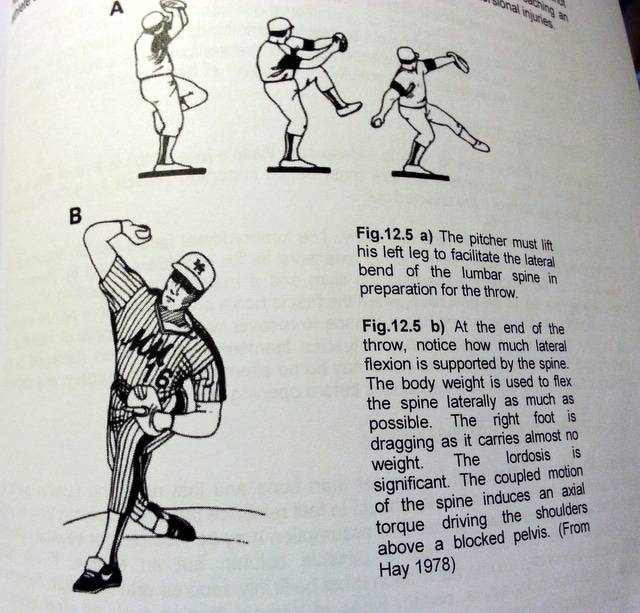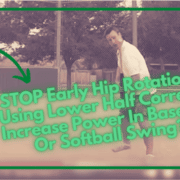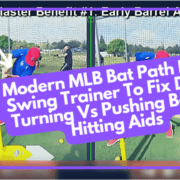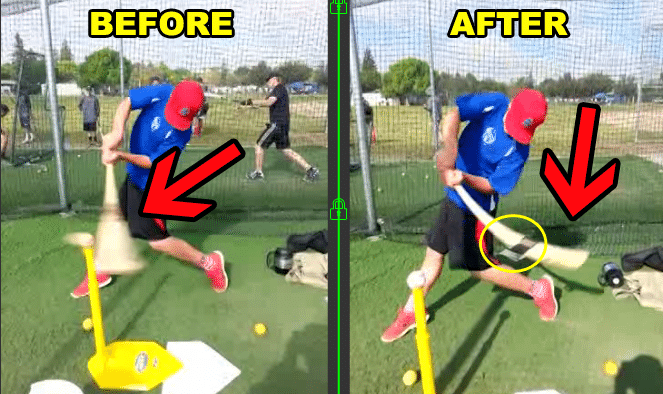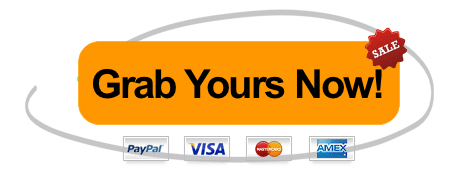Discover the secret to swing weight on the back foot, weight transfer, distribution, and stance footwork hitting drills for baseball and softball batting.
Baseball Hitting Drills For Youth: DO NOT Be “That Guy”
So, this is what I have to deal with on a weekly basis. I also want to apologize in advance, this is a little bit of a rant. Before going into the baseball hitting drills for youth, here’s some context, it all started when I posted this image of Buster Posey in his ‘Float’ position on Twitter (CLICK HERE for Twitter thread):

Buster Posey photo courtesy: Ezra Shaw/Getty Images
The caption I put over the Twitter image stated: “Hitting Misconception: ‘Keep the back knee inside the foot’. Buster Posey is ‘floating’ with his knee over ankle…”
This is when my conversation with @13tys started…
@13tys: his knee is inside his foot! No?
@hitperformlab (Me): nope, knee floating slightly off center of ankle.
@13tys: just showed the same pic to my 11yr old and asked him, reply “are you stupid? His knee is inside his ankle”.
(This is when I get the feeling that I was dealing with “that guy”)
@hitperformlab: he’s kind of bias don’t you think? Lol
@13tys: just showed the pic and asked. I usually use my 9 and 11 yr olds to call a spade a spade. They don’t know baseball politics.
@hitperformlab: it’s not the ideal angle, I’ll find another. You believe in keeping the knee inside at all costs?
@13tys: you don’t have to, but the further back it goes, the tougher u make hitting. Already tough enough w/o that much movement!
@hitperformlab: C’mon man! Had to prove to your 10yo I’m not “stupid” lol. Just did simple Google image search.
(Here are the two images of Buster Posey I posted to the baseball hitting drills for youth Twitter thread)...

Buster Posey photo courtesy: www.BayAreaSportsGuy.com
AND

Buster Posey photo courtesy: InWriteField.com
@13tys: still, we are looking at the same thing and seeing different things. To me, that knee is still not on top of the ankle.
(by the way, in the beginning of our Twitter conversation, I said “knee floating slightly off center of ankle”)…
@hitperformlab: let me get my 2 year old to comment on your comment lol
@hitperformlab: Posey is creating torque in his back hip. Also depends on the severity of the leg kick, Posey’s is about medium…hope this helps
@13tys: creating torque?? Seriously? This is y kids are so confused by their “hitting coaches” #keepitsimple
(Then like the “good American citizen” he is, posts a screenshot of the definition of “Torque”)…
@hitperformlab: I’m talking to you, not to kids. Read Dr. Kelly Starrett’s book The Supple Leopard .
.
@13tys: sorry, My experience and knowledge come from yrs in cages & video w/ the best hitters ever, some come from books on crossfit
@hitperformlab: book that’ll rock you’re isolated hitting world? Anatomy Trains by Thomas Myers.
by Thomas Myers.
(Then there was radio silence…)
SCIENCE-BASED TRAINING:
Improve your hitting strategy dramatically by applying human movement principles.
Learn not only how and what to train but also the science behind the methods.
FIRST of all, if spending years in the cages AND analyzing video of the best hitters ever, magically made you know EVERYTHING you need to know about effective hitting, then we wouldn’t have the problem we do today with guys like this, coming up with effective baseball hitting drills for youth hitters.
“That guy” is a soaked sponge, and has reached his ceiling of knowledge when it comes to hitting.
If experience, cage work, and analysis were the only standard of learning the swing, then we’d all have to accept what Alex Rodriguez shared about the secret to his swing during the 2015 World Series FOX Sports broadcast…
How he talked about keeping the barrel above his hands when hitting. And we ALL know how well that little tip would help our hitters 😛
And SECOND, this “talking down to you” TWEETitude, is a sure sign of an inferior coach, nevertheless, a knucklehead for a human being.
Slightly off topic…
Read this Business Insider article titled, “4 behaviors are the most reliable predictors of divorce”.
Guess which one of the ‘4 horsemen of the apocalypse’ is the worst offender in marriages…
CONTEMPT (aka, the “talking down to you” attitude).
Okay, back on topic…
Look, if we as coaches don’t have a solid foundation in human movement principles, validated by science, then we’re pissing in the wind! Without this foundation, conversations about hitting would model a Merry-Go-Round. Many of you have experienced this ridiculous insanity in popular online hitting forums.
Look at this slow motion video of Buster Posey. Look at the difference of the back knee position (over the ankle, slightly off center) at the 0:03 video mark, versus at the 0:09 video mark during the fall forward…
Here’s the holdup with hitting coaches, even ones I agree with on a majority of things,
They think that the back knee MUST stay inside the foot at ALL times. So, they teach ALL their hitters to do this, often putting the hitter’s back knee in an unnatural and awkward position before Forward Momentum.
If you think this knee position is healthy, then CLICK HERE to learn how bad putting the knee into a ‘knee valgus’ position is to our youth athletes from FunctionalMovement.com.
In addition,
These same instructors may also suggest and teach there hitters that when the back knee gets over the ankle, that it’s a BAD thing.
This couldn’t be further from the truth.
The shifting of the knee back over the ankle should have a purpose. A couple baseball hitting drills for youth concepts:
- A timing mechanism that I like to call the ‘Float’, AND
- Creating torque, or stability, in the back hip.
Baseball Hitting Drills for Youth #1: Using the ‘Float’
A ‘Float’ is a timing mechanism the hitter uses just before falling forward. It generally can be observed as a slight weight shift back towards the catcher before falling forward.
With the ‘Float’, the severity of the knee shift will depend on the leg kick. The higher the leg kick, the more the shifting of the knee over the ankle may have to happen.
For example, Willie Mays didn’t have much of a weight shift (or Float) back, he just fell forward with a slide step:
However, watch slow motion video of Josh Donaldson, who has a high leg kick, and you’ll see him virtually ‘pause’ on one leg, before his fall forward:
Grab This FREE 'Timing Master Class' Video
Struggling to get your hitters ON-TIME in games? Discover HOW TO build effective laser-focused timing, so your hitters can be ON-TIME more often. These principles are validated by REAL science.
Click the button below to access the FREE video that has been downloaded over 6K times!
Click here to 'Get Instant Access'
Baseball Hitting Drills for Youth #2: Creating Hip Torque & Stability
Okay, so what is creating torque to stabilize the back hip mean? Let Dr. Kelly Starrett, Physical Therapist and owner of San Francisco CrossFit, at MobilityWOD.com explain its importance:
Here’s a baseball hitting drills for youth coaching cue that I use…
Borrowed from Dr. Kelly Starrett, I say to my hitters “screw the back ankle into the foot”. I also advise them to point the back toe slightly inward towards the pitcher at setup, and to keep it there while screwing the ankle in. The keyword is slight, not a lot.
Take a look at this video of Jose Bautista fouling a ball off, and watch how he ‘bows’ his back knee in, but at about the 0:06 second mark (when he begins his fall forward), the back knee starts to shift back towards the catcher…his back hip and thigh bone are searching for stability after being put in an unstable internally rotated (knee valgus) position at setup:
Now, CLICK HERE to watch this video clip of Ted Williams, and keep an eye on the back knee action between the 0:06-0:15 video mark. Sorry, this YouTuber disabled the embed code so I couldn’t embed the video here.
What did arguably one of the best hitters of all time do with his back knee prior to Forward Momentum. Boy, didn’t it shift back over the ankle?!
How about this homerun hit by Asdrubal Cabrera (watch the slow motion chest view at the 0:41 second mark)…
One more video…
Check out Matt Kemp. As you can see, he starts with his back knee inside his foot, then watch for his back knee action prior to Forward Momentum:
Now, is this making baseball hitting drills for youth more complicated, like Mr. @13tys said?
Heck no! It takes about 5 to 10-mins to explain to my 7-year-old hitters, and they begin applying it in their swings. Easy peasy.
So after looking at all this, here’s the point of my baseball hitting drills for youth rant…
Don’t get caught up drinking the cool-aid of other hitting experts, blowhards, or “That Guy” without questioning what they’re saying. Remember, we aren’t just observers. We’re amateur scientists in a way.
I don’t claim to know it all. And am still learning. But I know for a fact, I’m on a better road than “That Guy”.
Look, I don’t mind being challenged, but if you don’t back up what you’re saying with human movement principles, that are validated by science, then you’ll lose. We aren’t debating baseball hitting drills for youth philosophies or theories…we analyze through the lens of validated science. Physics, Engineering, Bodywork, Biology, Chemistry, and Biomechanics.
I DO NOT care what level you played or coached at.
I DO NOT care if you’ve digested a million hours of slow motion video footage of only the BEST hitters.
I also DO NOT care if you’ve logged more hitting lesson hours than it takes to fly to Mars!!
If you don’t understand the human movement “rules”, then you DO NOT understand high level hitting, or better yet, high level human performance.
I know this may upset some of you out there. But I don’t care. The days of being “That Guy” are numbered. If you aren’t moving with us, then you’ll be left behind. And that’s the truth.
Grab This FREE 'Timing Master Class' Video
Struggling to get your hitters ON-TIME in games? Discover HOW TO build effective laser-focused timing, so your hitters can be ON-TIME more often. These principles are validated by REAL science.
Click the button below to access the FREE video that has been downloaded over 6K times!
Click here to 'Get Instant Access'
, fascia:


